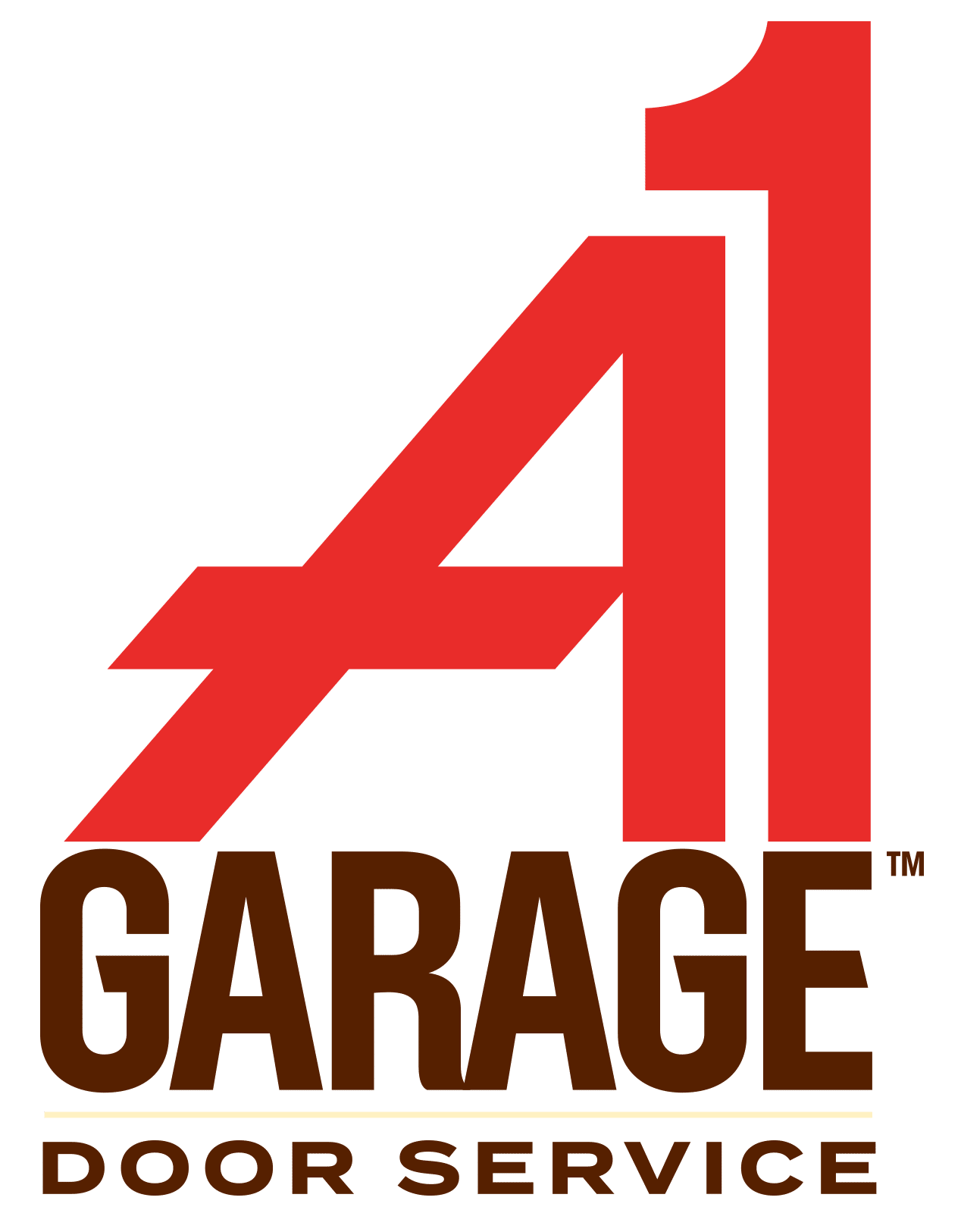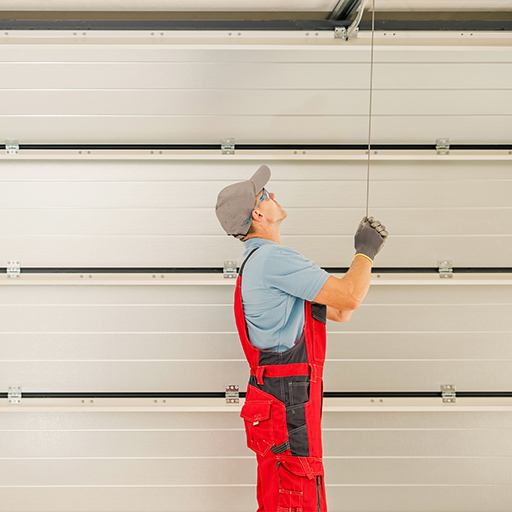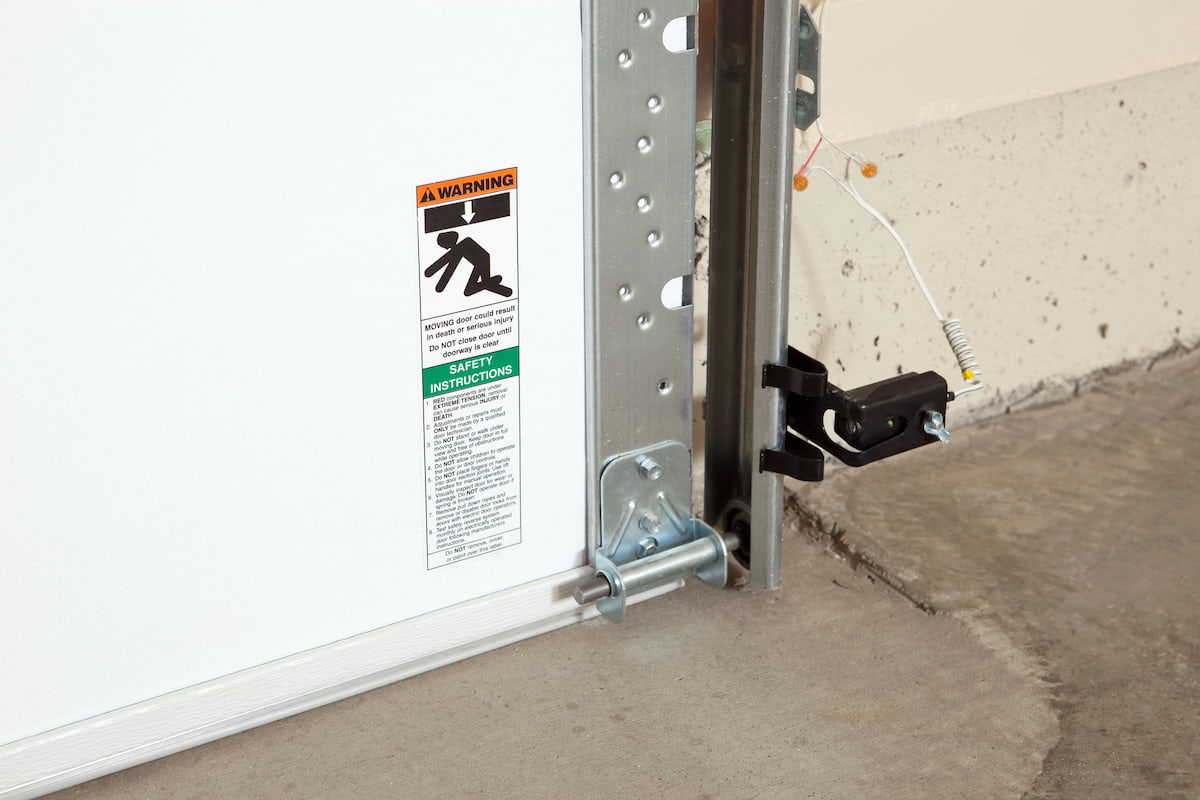In this guide, we are going to look at high-lift garage door conversions. We’ll discuss the benefits, how to measure, and how to perform a DIY conversion yourself. You might be undecided if a high lift garage door conversion is right for you. Maybe you are unsure if you should carry out the task or get the job done by a professional service. Hopefully, all your questions will be answered after reading the information provided below.
What is an Arizona High Lift Garage Door Conversion?
If you have a standard garage door installed in Arizona, but the ceiling is higher, you are likely losing out on some valuable vertical space in your garage that could be put to good use. As you are only converting your garage door, you keep the same one, and you’ll only be extending the garage door tracks that already exist. With a high lift garage door conversion, the track is moved nearer to the ceiling allowing for more clearance.
To carry out a high lift garage door conversion near you, you’ll require twelve inches of clearance for installing the equipment (such as drums, spring bars, end bearing plates, etc.) in addition to the clearance height you desire. If you have less than a foot of clearance, the installation won’t be possible.
On This Page
- Why you might need a high lift garage door
- How to measure for high lift garage doors
- Parts and Tools required
- Safety Considerations
- Step by Step for DIY installation
- Maintenance
- Contact us
Why Might You Need a High Lift Garage Door Near You?
The ceiling space in your garage is valuable real estate and can be put to good use.

The primary reason for converting a standard garage door to a high lift is installing a two or four-post car lift. You’ve probably seen these at the repair shop, the car is driven onto a platform and is lifted into the air.
Installing a car lift allows you to perform maintenance tasks on your vehicle with ease. But more importantly, it will hold two cars on top of each other, getting a car off the driveway and better protecting it in the winter months. One car is elevated on the platform while the other one is parked underneath.
You might not necessarily need the extra vertical space in your garage for additional cars but instead, want to make use of it for storage purposes.
How to Measure for High Lift Garage Doors
If you’ve decided to go ahead and convert your existing garage door, the first thing you will need to do is take some measurements.
- Height and width of your garage door – This is self-explanatory; use a tape measure to determine your garage door’s dimensions.
- Track-to-jamb dimensions – Using your tape measure, find out the distance from the garage door jamb to the rear of the top of the vertical track.
- Measure the radius of the horizontal track – This can be achieved by positioning a level at the junction where the vertical and horizontal track meets and then with your tape measure, determine the measurement between the level and the base of the horizontal track; typically, this is 12″ or 15″.
- Measure the floor-to-ceiling dimensions – At either end of the garage door opening, measure the floor to ceiling distance. If you find that they vary in height, then use the side with the shorter distance as your measurement. Any space that will be required above the door, such as lights, needs to be subtracted.
- Measure from the floor to the top of the horizontal track – Use your tape measure to get the measurement from the floor to slightly after the end of the track’s curved section.
- Determine the weight of your garage door – The final step is to weigh your garage door; for best results, use analog scales. Digital scales can show inaccurate information as they typically don’t change the weight displayed after it is initially calculated.
You should weigh the garage door with the spring unwound, and if the surface of the garage is uneven, lay some boards under the analog scales. On occasion, the garage door gets stuck on the track, so giving it a bit of a shake should ensure that you get the correct weight.
Parts and Tools Required for Your High Lift Garage Door Conversion in Arizona
Once you have your measurements, you can purchase a high lift garage door kit that will contain all the parts required for your conversion. A cheaper option is to buy the parts separately, though you need to be confident that you are purchasing the parts that fit your particular garage door.
When installing a high lift conversion, the lift mechanism’s hardware will require changing; for instance, it will require extra power to lift the garage door higher. An extra vertical track will be needed, with new cables, drums, torsion springs, bearing plates, and support brackets.
In addition to the parts that come with your garage door high lift kit, you’ll likely need the following tools: an adjustable wrench, winding bars, a ladder, drill, measuring tape, socket wrenches, a hacksaw, an electric impact wrench, and vise grips. The tools and parts required will vary depending on your existing garage door setup.
A final consideration is the garage door opener. Often standard openers are situated above the garage door tracks with a cable rail bolted into the header over the door. You might find that once you have converted to a high lift, the existing garage door opener might not fit back. In this case, you might need to install a new jack-shaft opener, which is ensconced to the side of the door to prevent any obstruction. Be aware that this type of opener is more costly than the standard version.
Safety Considerations for Your High Lift Garage Door Conversion
Before you get to work on your high lift door conversion, we need to discuss the subject of safety.
Converting a door to a high lift involves replacing the torsion springs. These springs are under extreme tension; if you don’t follow the proper safety procedures or use the right tools to replace them, you are putting yourself at significant risk. People have been known to damage property and, even worse, break or lose fingers and limbs and even their lives by disregarding safety precautions. If you aren’t confident regarding your ability to perform this task, pay a little more, be safe, and hire a garage door professional.
A sturdy ladder is an essential tool for this task; don’t balance on a chair or something likely to slip or give way. Ideally, if you have a family member or colleague to help you, they can also hold the ladder and pass you tools, and god forbid, if you do have an accident, someone is there to help you. You both should be wearing safety glasses or goggles.
You need to have your wits about you and expect when you are winding or unwinding the spring that it could break at any time so keep body parts and your clothing away from it. Additionally, you should anticipate that while winding or unwinding the spring, the winding cone could explode or slip, so ensure your head is out of line.
It would be best if you also used the correct tools for the job, don’t use a screwdriver or any other non-specified tool; instead, use winding bars, also ensure that the bar is the right size for the springs. When winding/unwinding properly, engage the winding bar and control the action; this isn’t a job to rush.
Step By Step DIY High Lift Garage Door Conversion Instructions
These are the basic instructions for carrying out a high lift garage door conversion. Please, leave the job to the professionals if you have any doubts.
Step 1: Remove the Torsion Hardware
If you have an existing garage door opener, begin by removing it.
Using winding bars unwind the existing spring, take your time, and have safety in mind when carrying out this step. Then remove the spring anchor bracket and any carriage bolts, remove the end bearing plate, and the lag that protects it and the cable from both the cable drums.
Next, detach the shaft from the door and set it on the floor. Remove the bolts that fix the cone to the spring anchor bracket. The spring anchor bracket can be kept for reuse later. Loosen the set-screws, slide the end bearing plate, cable drum, and torsion spring from the shaft. You can also reuse the end bearing plate if it isn’t showing signs of wear. If it hasn’t come out already, remove the bushing inside the stationary cone for reuse. After loosening the set screws, remove the other cable drum and the end bearing plate.
Hammer a nail in the head slightly above the garage door and using a vise grip, bend it over the garage door’s top. This will prevent the top section of the door from falling when the horizontal track is removed.
Loosen the bolts on either side of the garage door that fixes the horizontal track to the angle iron. Remove the bolts that connect it to the flag bracket and keep hold of the track, so it doesn’t fall when the bolt is removed. Remove the bolt that secures it to the angle iron and then lower the track to the floor, repeat the same process on the other side of the garage door and remove the track hangs.
Step 2: Installation of The High Lift Hardware
Now we need to do a little prep. With a pen, make a mark on the inside of the flag bracket at the bottom, continue this line up the bracket’s length, and up to the ceiling using a level to ensure that it’s plumb. Repeat on the other side and remove the flag brackets.
If you didn’t purchase a pre-assembled high lift garage door conversion kit, you’d need to assemble the tracks. Position the high lift track extension over the roller and use the line you drew before to line it up. Ensure that there are studs behind the drywall of your garage; if not, you might need to add some to secure the hardware: Mark and pre-drill the areas where the new section of the high lift track will be secured.
Secure the lower section of the high lift track to the vertical track, the high lift angle iron to the garage wall, and the bottom bracket to the jamb. Secure the conversion kit to the vertical track, adjust and tighten the bolts on the top roller carrier, so it’s secured to the top fixture. Then repeat on the other side.
Step 3: Install the Track and Bearing Plate
From the rear of the horizontal track, measure out the distance of the high lift conversion. This will be the extra height that your door opens. Then add the length of the horizontal track that’s left when the garage door is open. Cutting off this track quantity will likely result in the garage door not fully opening, subtract around 1/2 foot, and mark the new distance on the track. Then cut both sections of track at the mark made.
Cut two sections of angle iron around 2 inches in length using a hacksaw. Place one section of the angle iron inside the end of the horizontal track, drill holes, and secure it with two bolts. Do this for both sections of the track.
The horizontal track angle needs to be extended to reach the angle of the high vertical lift. With a carriage bolt, connect the 12-inch angle to the horizontal angle for both horizontal tracks. To ensure it fits, put the horizontal track on top of the high lift track. Connect it to the high lift plate with a bolt but don’t tighten it. Secure the angle extension to the vertical angle with a bolt. Secure the horizontal track base to the high lift plate if the high lift track and horizontal track overlap and file the end of the high lift track.
Connect the end bearing plate and the angle iron with bolts, tighten the bolts at the base of the plate, and for the end bearing plate pre-drill a hole. With a lag screw, fix the top of the end bearing plate to the wall and tighten the bolts connecting it to the angle iron.
Position the new cable drum over the bearing race, install the horizontal track for the other side, and the end bearing plate. Secure the angle iron to the garage ceiling, connect the hangs and repeat for the other horizontal track. Then remove the nail you placed earlier above the door of the garage.
Step 4: Installing the Spring Anchor Bracket
This step is fairly brief; the shaft needs to be slid into the end bearing plates, line up the spring anchor bracket, so it is in the shaft’s center and pre-drill the holes where you will secure it. In the top hole, install one lag screw and secure the bracket to the header, remove the shaft and place it on the garage floor.
Step 5: Assembling the Shaft Hardware
Slide the bushing you kept from earlier on to the shaft and then slide the new spring onto the shaft, followed by the new cable drums on either side. Lift the shaft to the top of the garage door and insert into the end bearing plates.
Step 6: Installing the Torsion Spring
Insert bolts in the stationery cones and in the slots on the spring anchor brackets and secure them. Remove the existing cable from the base fixture and install the new on both sides of the garage door. Slide the cable drum to the bearing race and tighten the set screws. Once the cable is inserted into the drum, twist the shaft so the cable wraps around the drum. Repeat with the other cable drum.
The final step is to wind the torsion spring, which is the reverse of the process for the first step. When you order a high door garage kit, it should provide you with how many times you need to wind the spring.
Maintaining Your Arizona High Lift Garage Door
Now you have your high lift garage door installed; you need to maintain it properly. Garage door mechanisms are made up of numerous moving parts; if they fail, you could end up with a door that can’t open or close. We’ve discussed the dangers of garage door springs, and if they wear down, it could damage property or injure you or a loved one.
Routine lubrication is important for the smooth running of regular or high-lift garage doors. It will prevent friction, which is the primary cause of wear on garage doors. Metal scraping against metal is a pretty distinct sound, so you’ll soon be alerted when your high-lift garage door needs lubricating!
These are the important areas you should be focusing on when performing regular maintenance for your high-lift garage door.
Tracks – Your garage door tracks need minimal maintenance; you just need to keep them free of any debris that could hinder the rollers’ movement. All you need to do is wipe the length of the tracks with a damp cloth from time to time.
Rollers and hinges – maintenance of your rollers and garage door hinges will depend on what material they are constructed from. If you have nylon rollers, you only need to lubricate the inner bearings, being sure to wipe off any excess oil from the nylon material. You can lubricate all the components for high-lift garage doors with metal rollers, but again, you’ll want to wipe away any excess, so it doesn’t drip on your garage floor or vehicle.
For the door hinges, if they are made of plastic, you can clean them with a damp cloth or, if made of metal, add a little oil to the pivot points.
Once you have carried out your maintenance and all the parts are lubricated or cleaned, then raise and lower the high lift garage door a few times. This will spread the lubricant evenly and will also highlight if you have any further issues that might need fixing.
Contact an Experienced Arizona High Lift Garage Door Conversion Company Near You
A high lift garage door conversion will give you that extra space you might need so that you can store an additional car inside or just extra stuff. It doesn’t require replacing your existing garage door. It is a job that can be carried out by an experienced DIY enthusiast who understands the safety requirements needed. If you have read our guide and are still unsure if you have the ability to complete the job without damage to yourself or property, then make a smart move and hire a garage door specialist for peace of mind.
Not only does a problematic garage door cause headaches, it potentially creates privacy and security issues for your home. That makes choosing the right local garage door repair company even more important, as you want to ensure you will receive quality parts, experienced labor and a lasting guarantee.
Google Reviews of Our Garage Door Installation & Repair Services
Scheduling my appointment was made so easy by Brittany. She was professional, courteous and able to ask the technician to call me before arriving at my home so I could leave work in time.
My technician Dillon was amazing! He offered me options, explaining each one, installed everything right there, the same day, and did a safety check on my existing garage door to make sure everything would continue to work after he installed my new opener!
I would recommend this company to anyone! They were highly professional, competent, and pleasant to work with!! They went above and beyond in my book! There should be a 6 star option!
Tina Reames (Feb 28, 2022) on Google (see our 4.8 average rating and 3260 Google reviews here)
⭐⭐⭐⭐⭐




